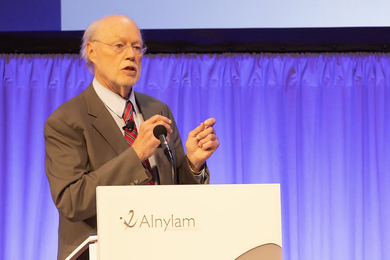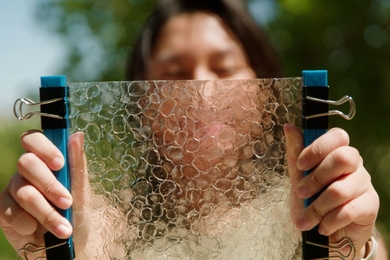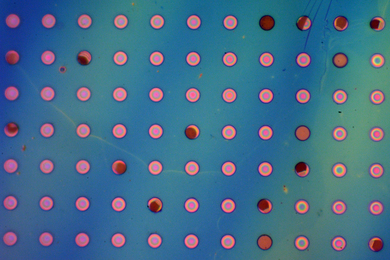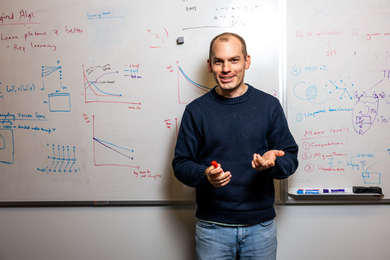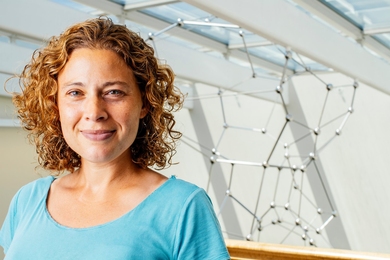The amount of radioactive phosphorus-32 (P-32) ingested by an MIT researcher was below the allowable limit and would not have caused him any health problems, a Nuclear Regulatory Commission Incident Investigation Team has concluded.
"Any (health) symptoms that may have been experienced were due to factors other than radiation exposure," according to a 130-page report released Friday at a public meeting of the NRC team held at MIT. It noted that symptoms were not reported by the researcher during the five-day period between when the incident is believed to have occurred and when it was discovered (August 19), and that the symptoms reported by the researcher "were not consistent with those expected to result from radiation exposure."
Health symptoms reported in people who had ingested between 20 and 50 times more P-32 were different than those reported by the researcher, the report said.
Dr. John Glenn, head of the Incident Investigating Team, complimented MIT on the "very good data" developed in the course of the MIT investigation which led Dr. Glenn to state that the MIT-reported dose of 579 microcuries is correct and an overexposure did not occur. The occupational limit for a one-time and annual exposure of P-32 is 600 microcuries.
"While the (NRC) Team found weaknesses in the actions taken by (MIT) Radiation Protection Office personnel, the licensee's overall response was good," the report said. It praised actions of RPO staff when they first were notified, their survey of the lab and the researcher's home, the careful work in measuring the exposure by both whole body count and urine analysis for 60 days, the suspension of use of radioactive materials for an inventory, and the subsequent decision to lock up the radioactive material.
The NRC report said the researcher "most likely ingested P-32 as a result of a deliberate act by a knowledgeable person" who "must have known that it was kept in freezers and that it required thawing before use." Dr. Glenn commented, "That is not a finding of fact. We did not in fact identify exactly how the ingestion occurred. It is a finding, though, of the weight of the evidence, that it's more probable that it was deliberate than that it was accidental."
The report said, "Assuming that the intake was not a result of an accidental splash or spill but that the activity was ingested with food, the time of day on August 14 at which intake occurred was estimated to be noon. This estimate was based on Researcher A's recollection that he ate his lunch at that time, and also his recollection that this was the food left in the laboratory's food refrigerator on the previous day."
QUESTIONS REMAIN
Frank Masse, the MIT radiation protection officer, commented at the hearing, "We're still very much puzzled by many aspects of this entire incident. I see that you have concluded that in all probability, the intake occurred as he ate his lunch on Monday [Aug. 14] with a lunch that had been carried over from the previous day. Yet, when he surveyed out his laboratory work at 7pm that day, he surveyed successfully without any increase in background [radiation]. We just don't think that's possible. We do not think it's possible that he could have had a half a millicurie of P32 in him at 7pm and surveyed himself out of the laboratory successfully."
The NRC report criticized security at the laboratory. "Security of radioactive materials was weak in the building in which the laboratory was located, and any person working in the building would have had easy access to the freezer in which the radioactive material was stored." It also found fault with security in the lab on nights and weekends.
The report criticized both the MIT Radiation Protection Office and the Nuclear Regulatory Commission regarding storage and control of radioactive material. It said the RPO exercised "weak oversight" and that the NRC's regulatory standards and guidance for security and control were inconsistent. An NRC spokesman said an Incident Investigation Team, which is convened about once a year, is designed to examine not only the incident, but to see whether the NRC's procedures may have contributed to the problem and should be changed
The team was unable to determine a root cause of the incident. A separate NRC Office of Investigations team, which can bring criminal charges, is still seeking to determine how it happened.
Contributing causes, the Incident Investigation Team report said, involved both MIT and the NRC. First, said Dr. Glenn, MIT's security program "was not effective to deter or detect diversion of radioactive materials. We're not saying that security and control in itself could prevent a person who is authorized to use radioactive material from doing something with that radioactive material that they shouldn't. However, we do feel that strict accountability and security of materials is a very big deterrent towards anyone attempting to do something like this."
Second, the report also cited the fact that the "NRC regulations do not require licensees to report deliberate acts involving ingestion of radioactive materials." Third, the NRC had not assembled and did not disseminate information about nine previous events since 1978-at other research and medical institutions in North America-involving P-32 or Iodine 125. The report said the NRC did not inform licensees of the June 1995 incident at the National Institutes of Health, involving a pregnant woman and 27 other people, until four months after it was reported. "We think if we expect licensees to be evaluating their own programs, developing their own deterrents to this kind of activity, that there was a burden on the NRC to get out what we did note and to get it out promptly," Dr. Glenn said.
An NRC chart of the nine other incidents said that two iodine-125 incidents were self-inflicted; two other P-32 incidents were suspected to be self-inflicted; one I-125 incident and three P-32 incidents found no perpetrator; and one incident, in Toronto in 1992, resulted in the subsequent conviction of a man who took P-32 from the research hospital where he worked and contaminated his roommate with about 230 microcuries of P-32.
Dr. Glenn said that the team "will be providing suggested actions based on these conclusions to the executive director for operations and he will determine which of those to send forward."
MIT Vice President and Dean of Research J. David Litster, commenting at the public meeting, thanked the NRC for its work. He said, "I think both we and the individual who ingested the phosphorus-32 will be pleased to know that there are apparently no health consequences of this. I think, too, that in their response to this incident, our Radiation Protection Office really performed admirably and would like to compliment them publicly on their having done so.
"I think there are a number of things for us all to learn here. I think our procedures certainly have not been as stringent or strict as perhaps they ought to be. We have already changed many things in response to suggestions from the NRC. The NRC itself is going to learn a few things from this as well, so I think that's important.
"I think some of the things we can do will optimize the situation. People will still be able to carry out their research and we will have procedures in place that will tend to reduce the opportunities for incidents like this in the future. I think it will also generally create a mental environment [in which] these materials perhaps need to be treated with a great deal more respect ," Professor Litster said.
A version of this article appeared in MIT Tech Talk on December 13, 1995.
